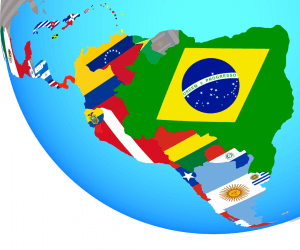Unexpected consequences (ii)

It would be naive to think that the implementation of national electronic invoicing systems or almost real-time electronic invoicing information does not increase the control capabilities of the tax administration. Some numbers presented by the SAT of Mexico at our last General Assembly in Guatemala are a significant demonstration. For example: in Mexico, there are more than fifty billion electronic documents, and 260 documents are received and processed per second for a total storage of 500 Tb. An 89% increase in collection has been achieved between 2014 and 2020, with a 48% reduction in the associated cost, while the amounts collected associated with specific audit processes grew by 136%, largely thanks to electronic audits.
However, the widespread adoption of e-invoicing brings advantages and opportunities also for the taxpayers and the business environment. Many of these advantages are offered by the possibility of significantly improving business processes, not only tax compliance, associated with the elimination of cumbersome physical limitations of paper and the ability to link and automatize processes _ the famous pipelining for IT people. Some good examples of these possibilities are the restaurants platforms developed or improved during the pandemic, to manage orders at home that allow doing everything through mobile devices, from a review of the menu through QR or log in from a social network to the electronic payment and the shipping of the electronic invoice to the client, using not only e-mail but instant messaging platforms (and the tax administration using the corresponding web services). They undoubtedly will continue using and strengthening them after the physical reopening of the restaurants.
But other aspects, undoubtedly important, come directly from the services that the tax administration provides. Some of them, such as the records of purchases and sales within the tax administration systems and the pre-filled declarations of income and particularly of VAT, are important examples. We can just look at the level of acceptance of the pre-filled declaration of personal income, where 8.8 million individuals pre-filled income tax returns with electronic invoicing data, or in Chile where the level of acceptance of the pre-filled VAT declaration is, in practical terms, total. Other services, certainly newer, are further away from compliance control and are geared directly to the service.
In Brazil, which has implemented for some time an array of services to citizens based on electronic invoicing, the Easy Fiscal Note, a simplified system for issuing electronic invoices, has recently been developed through an application supported by the tax administration aimed at small taxpayers, such as individual micro-entrepreneurs, self-employed carriers and small primary producers. They can use their smartphone to invoice electronically. Beyond making available to very small taxpayers an operation model that resembles that of sophisticated technology stores in selling, collecting, and invoicing at the same time of the sale and by the same seller, it opens doors to formalization and frees taxpayers from dealing with the complexities of XML and validation rules since, with only a limited amount of information, the application generates electronic documents complying with all the established formalities.
In Ecuador, the Internal Revenue Service has put into operation this year an online VAT refund mechanism for older adults, a benefit established in the legislation, in the electronic invoice itself. The process, which looks incredibly easy, goes through an online registration where the elderly, after the corresponding risk analysis and verification that accredits him as a possible beneficiary, receives a key, the famous pin, at his electronic tax address. When buying in one of the authorized establishments, the taxpayer prepares and sends without human intervention the electronic invoice to the SRI that determines if the beneficiary is entitled to the refund and has available balance (if he has not reached the monthly limit), the establishment requests the PIN to the elderly, and the refund is applied at the same time of the sale, using the electronic invoice.
The process replaces a mechanism of reimbursement of expenses made that would surely take weeks or months for the beneficiary as a result of the likely accumulation of invoices before making the application. The service is much more like the online operation of a credit card than the sometimes exaggerated, sometimes very real image of the bureaucratic slowness of the public service. Beyond that, if we think of the process, the design process goes through a decision of the tax administration at the time of the transaction associated with the taxable event, someone may say it is to put that continuous monitoring of transactions to walk in the middle of the hectic traffic of one of our cities on one of those electric scooters _ in a very efficient way and without polluting the environment, but always with a helmet, in case of risks_ however, it is a demonstration of the technical and administrative feasibility of incorporating new mechanisms of management, personalized, which even opens the door to innovations or consolidation of such things as the personalized VAT.
While the factoring of invoices, even electronic exists in many countries, its access is restricted to relatively few users for risk management issues. In Colombia, on August 18, the RADIAN, the electronic invoice registry as a security title, is inaugurated. A service inspired by the success of the registration of invoices for assignment in Chile, where the total amount negotiated is around 8% of GDP (yes, you read it well) and that opens opportunities for small and medium taxpayers to access financial resources in an agile way and at lower costs. The registry platform allows you to publish the electronic invoices that you wish to trade, and the events associated with these invoices, the assignment, the payment, the cancellation or renegotiation, which have been signed electronically by the issuer and authorized by the DIAN, which will enable operators to check the veracity of the documents and their status in the title-value and make a better management of risk in the process. In addition, in the case of RADIAN, the operators authorized from the design include the traditional factors, banks and financial companies for example, but incorporates two additional groups, the Fintech and the authorized technical operators of electronic invoicing; the two groups attached by nature to the use of new technologies and developments have the potential to take advantage of the RADIAN as an infrastructure on which to build smart solutions that, I imagine, can go from auction markets of titles-value to value-added services associated with the management of risk and the analysis of markets, creating spaces to a kind of culture of the stock market that could access, why not, even individual small investors. At the launch of the RADIAN, a person from the public present at the virtual hybrid event asked a question with a suspicious tone that I paraphrase here, “And what does the tax administration gain from this? Do they want to control us more?”. The response also quoted, is simple: “Nothing, the administration already has these documents, it is a service that can benefit the vendors who are paid in 60 days (or longer in some countries), and they can anticipate the funds with which, at least, they can pay the tax resulting from the transaction that was generated in the same period of the issue when using an accrual basis, or even more, produce more, innovate or at least to pay effectively less, thanks to the access to financing. Let us hope that the RADIAN numbers will become as good as those in Chile, where in fact statistical data on the publication and transfer of documents are available on the SII site with an open data approach.
There are already ten administrations in Latin America with consolidated national electronic invoicing systems. Others are in the process of expansion and consolidation. At the same time, similar models are increasingly being adopted in other regions of the world, with different but similar flavors and particularities. The challenge to do more with invoices is still present, to do things like those mentioned before, because not also things with a vision of services and, as already mentioned in a previous post on the subject, with a focus on win-win. It’s worth copying that cliché today when everyone really wins.
Greetings and good luck.

1,809 total views, 1 views today

1 comment
Dear Raul,
One additional Unexpected consequences is described in:
https://www.ciat.org/modelo-esloveno-de-liquidez/
Best regards,
Tomaž